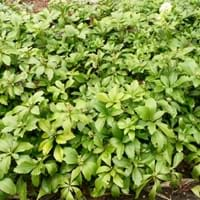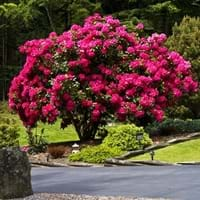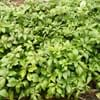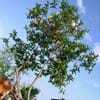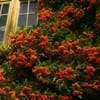Life Span
Perennial
Perennial
Type
Broadleaf Evergreen
Broadleaf Evergreen
Origin
China, Japan
Hybrid origin
Types
Not available
Rhododendron aberconwayi, Rhododendron bulu, Rhododendron kanehirae
Habitat
Banks, Slopes, Temperate Regions
moist forests
USDA Hardiness Zone
4-8
5-8
AHS Heat Zone
Not Available
Not Available
Habit
Prostrate/Trailing
Spreading
Minimum Height
Not Available
Flower Color Modifier
Bicolor
Bicolor
Fruit Color
Not Available
Green, Tan
Leaf Color in Spring
Dark Green
Green
Leaf Color in Summer
Dark Green
Green
Leaf Color in Fall
Dark Green
Green
Leaf Color in Winter
Dark Green
Green
Leaf Shape
Lanceolate
Ovate
Plant Season
Spring, Summer, Fall, Winter
Spring, Summer, Fall, Winter
Sunlight
Partial shade, Full Shade
Full Sun, Partial Sun
Growth Rate
Medium
Medium
Type of Soil
Loam
Loam, Sand
The pH of Soil
Acidic, Neutral
Acidic
Soil Drainage
Well drained
Well drained
Bloom Time
Late Spring, Early Summer
Late Spring
Tolerances
Drought, Variety of soil types
Not Available
Where to Plant?
Ground
Ground
How to Plant?
Divison, Seedlings, Softwood cuttings, Stem Cutting
From Rhizomes, Seedlings, Stem Planting
Plant Maintenance
Low
Medium
Watering Requirements
Requires watering in the growing season
Do Not over Water, Keep ground moist
In Summer
Lots of watering
Consistently
In Spring
Moderate
Moderate
In Winter
Average Water
Ample Water
Soil pH
Acidic, Neutral
Acidic
Soil Type
Loam
Loam, Sand
Soil Drainage Capacity
Well drained
Well drained
Sun Exposure
Partial shade, Full Shade
Full Sun, Partial Sun
Pruning
Remove damaged leaves, Remove dead branches, Remove dead leaves
Prune after flowering, Remove dead or diseased plant parts, Remove deadheads, Remove short twigs
Fertilizers
All-Purpose Liquid Fertilizer
Apply 12-10-18 NPK, General garden fertilizer
Pests and Diseases
Alternaria leaf blight, Canker, Root knot nematode
Azalea leaf gall, Bud blast, Galls, Honey fungus, Leaf Hoppers, Leaf spot, Petal blight, Phytophthora, Powdery mildew, Rust, Silver leaf
Plant Tolerance
Drought, Variety of soil types
Not Available
Flowers
Insignificant
Showy
Flower Petal Number
Single
Single
Foliage Texture
Medium
Coarse
Foliage Sheen
Glossy
Matte
Attracts
Bees
Not Available
Allergy
Not Available
Asthma
Aesthetic Uses
Cottage Garden, Ground Cover, Landscape Designing, Showy Purposes
Showy Purposes
Beauty Benefits
Not Available
Making cosmetics
Environmental Uses
Air purification
Air purification
Medicinal Uses
Not Available
Burns, Chronic fatigue, Cold, Diarrhea, Dysentry, Headache, Rheumatism
Part of Plant Used
Fruits
Whole plant
Other Uses
Container, Culinary use, Florist trade and landscaping, Grown for shade
Cosmetics, Employed in herbal medicine, Oil is used for aromatherapy, Oil is used in perfume, soaps, creams, etc., Sometimes used for making wine
Used As Indoor Plant
No
No
Used As Outdoor Plant
Yes
Yes
Garden Design
Groundcover
Feature Plant, Hedges, Mixed Border, Screening, Wind Break, Topiary, Bonsai, Espalier
Botanical Name
Pachysandra terminalis
RHODODENDRON
Common Name
Pachysandra, Japanese pachysandra, carpet box, Japanese spurge
Rhododendron
In Hindi
जापानी रसदार पौधा
rhododendron
In German
japanische Spurge
Rhododendron
In French
Euphorbe japonaise
rhododendron
In Spanish
Euphorbia japonesa
rododendro
In Greek
Ιαπωνικά Ευφόρβιο
ροδοδάφνη
In Portuguese
Spurge japonês
rododendro
In Polish
japoński Wilczomlecz
rododendron
In Latin
Spurge Italica
Rhododendron
Phylum
Magnoliophyta
Magnoliophyta
Class
Magnoliopsida
Magnoliopsida
Order
Euphorbiales
Ericales
Family
Buxaceae
Ericaceae
Genus
Pachysandra
Rhododendron
Clade
Angiosperms, Eudicots
Angiosperms, Asterids, Eudicots
Tribe
Not Available
Rhodoreae
Subfamily
Not Available
Ericoideae
Importance of Japanese Spurge and Rhododendron
Want to have the most appropriate plant for your garden? You might want to know the importance of Japanese Spurge and Rhododendron. Basically, these two plants vary in many aspects. Compare Japanese Spurge and Rhododendron as they differ in many characteristics such as their life, care, benefits, facts, etc. Every gardener must at least have the slightest clue about the plants he wants to plant in his garden. Compare their benefits, which differ in many ways like facts and uses. The medicinal use of Japanese Spurge is Not Available whereas of Rhododendron is Burns, Chronic fatigue, Cold, Diarrhea, Dysentry, Headache and Rheumatism. Japanese Spurge has beauty benefits as follows: Not Available while Rhododendron has beauty benefits as follows: Not Available.
Compare Facts of Japanese Spurge vs Rhododendron
How to choose the best garden plant for your garden depending upon its facts? Here garden plant comparison will help you to solve this query. Compare the facts of Japanese Spurge vs Rhododendron and know which one to choose. As garden plants have benefits and other uses, allergy is also a major drawback of plants for some people. Allergic reactions of Japanese Spurge are Not Available whereas of Rhododendron have Asthma respectively. Having a fruit bearing plant in your garden can be a plus point of your garden. Japanese Spurge has no showy fruits and Rhododendron has no showy fruits. Also Japanese Spurge is not flowering and Rhododendron is not flowering . You can compare Japanese Spurge and Rhododendron facts and facts of other plants too.
